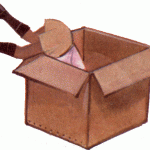 This may be included in the realm of misguided terminology, but I often get comments from my bankruptcy clients that sound something like this:
This may be included in the realm of misguided terminology, but I often get comments from my bankruptcy clients that sound something like this:
“I didn’t know my cars were IN the bankruptcy.”
Or, “I thought we were keeping the house out of this bankruptcy.”
These statements are grating on my ears (they would be painful to any bankruptcy attorney), although the clients are probably not going to be harmed, and are just a little mistaken about bankruptcy lingo.
So, to straighten things out, here is a very short (I promise) primer on bankruptcy-speak for the layman:
When a consumer files a bankruptcy case, he needs to list all of his assets, of whatever type and value, on the filing. So everything is really “IN” the bankruptcy — or it should be. The actual lingo that attorneys use is that the debtor’s assets now form a bankruptcy estate, which is what the court is charged with administrating.
Debtors then make a separate listing of the assets that they claim are “exempt” from sale in the bankruptcy. This list typically runs up to and including every asset declared in the first place — so the debtor is often able to keep ALL of his assets, and NOTHING is sold. Bankruptcy geeks call this a “no-asset case.”
But what if assets are really left off the petition? If it’s an innocent mistake, it MIGHT be possible to add it later, but not a 100% guarantee. And if a judge gets a whiff of the idea that the mistake isn’t so innocent, bad news is around the corner, because this case will be headed for trouble sooner rather than later.
The moral of the story: it is possible to lose a cherished or valuable asset by NOT listing it in your bankruptcy petition, while it is rare to see this happen to assets that are properly listed.
So make sure you take some time and list everything you own before you file. You’ll be glad you did, and will sleep a lot easier, and will probably keep it all, too.
By Doug Beaton